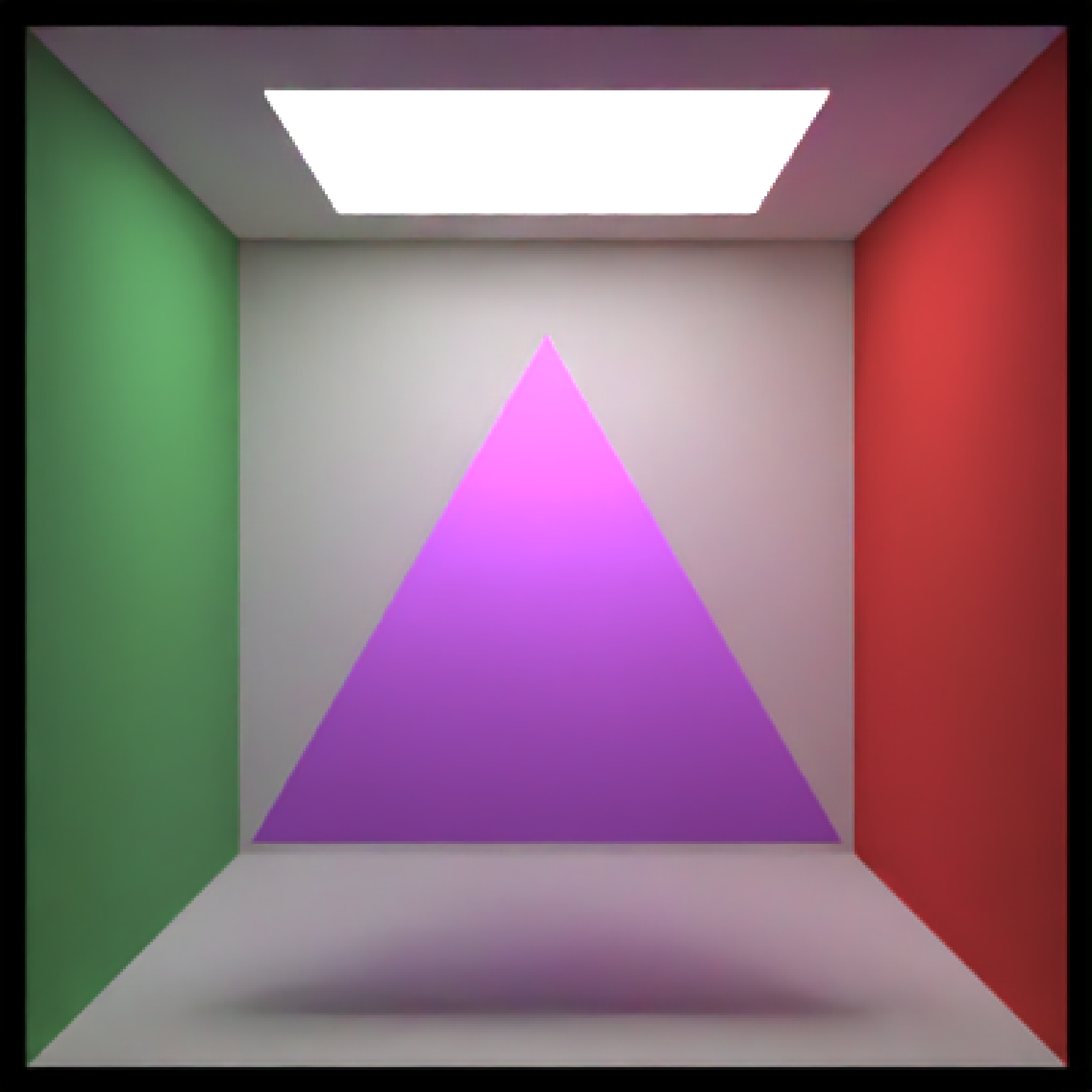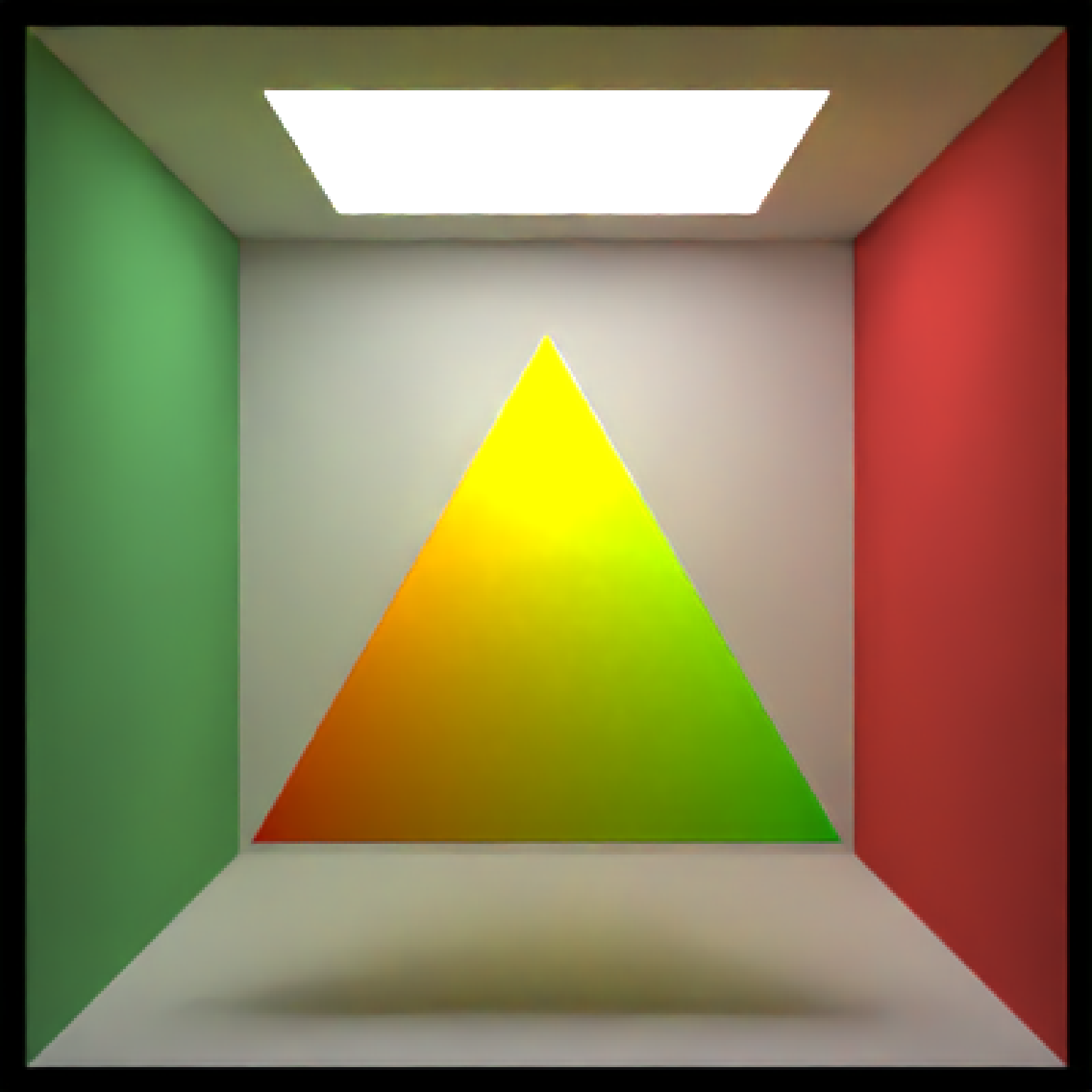Triangle Object
triangle(
v1 = c(1, 0, 0),
v2 = c(0, 1, 0),
v3 = c(-1, 0, 0),
n1 = rep(NA, 3),
n2 = rep(NA, 3),
n3 = rep(NA, 3),
color1 = rep(NA, 3),
color2 = rep(NA, 3),
color3 = rep(NA, 3),
material = diffuse(),
angle = c(0, 0, 0),
order_rotation = c(1, 2, 3),
flipped = FALSE,
reversed = FALSE,
scale = c(1, 1, 1)
)Arguments
- v1
Default `c(1, 0, 0)`. Length-3 vector indicating the x, y, and z coordinate of the first triangle vertex.
- v2
Default `c(0, 1, 0)`. Length-3 vector indicating the x, y, and z coordinate of the second triangle vertex.
- v3
Default `c(-1, 0, 0)`. Length-3 vector indicating the x, y, and z coordinate of the third triangle vertex.
- n1
Default `NA`. Length-3 vector indicating the normal vector associated with the first triangle vertex.
- n2
Default `NA`. Length-3 vector indicating the normal vector associated with the second triangle vertex.
- n3
Default `NA`. Length-3 vector indicating the normal vector associated with the third triangle vertex.
- color1
Default `NA`. Length-3 vector or string indicating the color associated with the first triangle vertex. If NA but other vertices specified, color inherits from material.
- color2
Default `NA`. Length-3 vector or string indicating the color associated with the second triangle vertex. If NA but other vertices specified, color inherits from material.
- color3
Default `NA`. Length-3 vector or string indicating the color associated with the third triangle vertex. If NA but other vertices specified, color inherits from material.
- material
Default
diffuse.The material, called from one of the material functionsdiffuse,metal, ordielectric.- angle
Default `c(0, 0, 0)`. Angle of rotation around the x, y, and z axes, applied in the order specified in `order_rotation`.
- order_rotation
Default `c(1, 2, 3)`. The order to apply the rotations, referring to "x", "y", and "z".
- flipped
Default `FALSE`. Whether to flip the normals.
- reversed
Default `FALSE`. Similar to the `flipped` argument, but this reverses the handedness of the triangle so it will be oriented in the opposite direction.
- scale
Default `c(1, 1, 1)`. Scale transformation in the x, y, and z directions. If this is a single value, number, the object will be scaled uniformly. Note: emissive objects may not currently function correctly when scaled.
Value
Single row of a tibble describing the XZ plane in the scene.
Examples
#Generate a triangle in the Cornell box.
if(run_documentation()) {
generate_cornell() %>%
add_object(triangle(v1 = c(100, 100, 100), v2 = c(555/2, 455, 455), v3 = c(455, 100, 100),
material = diffuse(color = "purple"))) %>%
render_scene(lookfrom = c(278, 278, -800) ,lookat = c(278, 278, 0), fov = 40,
ambient_light = FALSE, samples = 16, parallel = TRUE, clamp_value = 5)
}
 #Pass individual colors to each vertex:
if(run_documentation()) {
generate_cornell() %>%
add_object(triangle(v1 = c(100, 100, 100), v2 = c(555/2, 455, 455), v3 = c(455, 100, 100),
color1 = "green", color2 = "yellow", color3 = "red")) %>%
render_scene(lookfrom = c(278, 278, -800) ,lookat = c(278, 278, 0), fov = 40,
ambient_light = FALSE, samples = 16, parallel = TRUE, clamp_value = 5)
}
#Pass individual colors to each vertex:
if(run_documentation()) {
generate_cornell() %>%
add_object(triangle(v1 = c(100, 100, 100), v2 = c(555/2, 455, 455), v3 = c(455, 100, 100),
color1 = "green", color2 = "yellow", color3 = "red")) %>%
render_scene(lookfrom = c(278, 278, -800) ,lookat = c(278, 278, 0), fov = 40,
ambient_light = FALSE, samples = 16, parallel = TRUE, clamp_value = 5)
}
